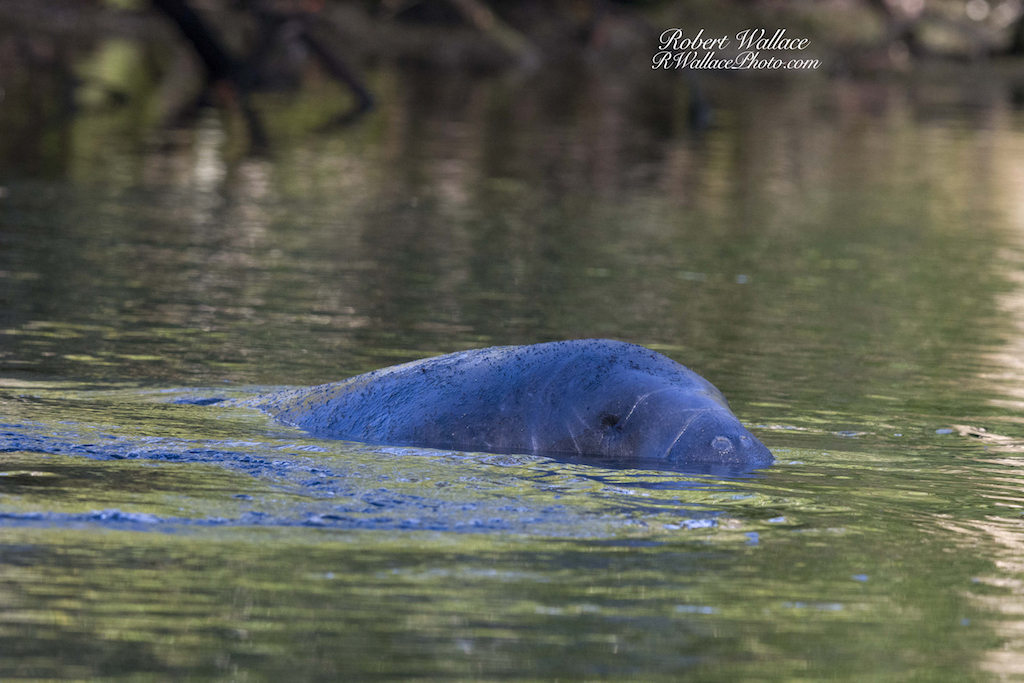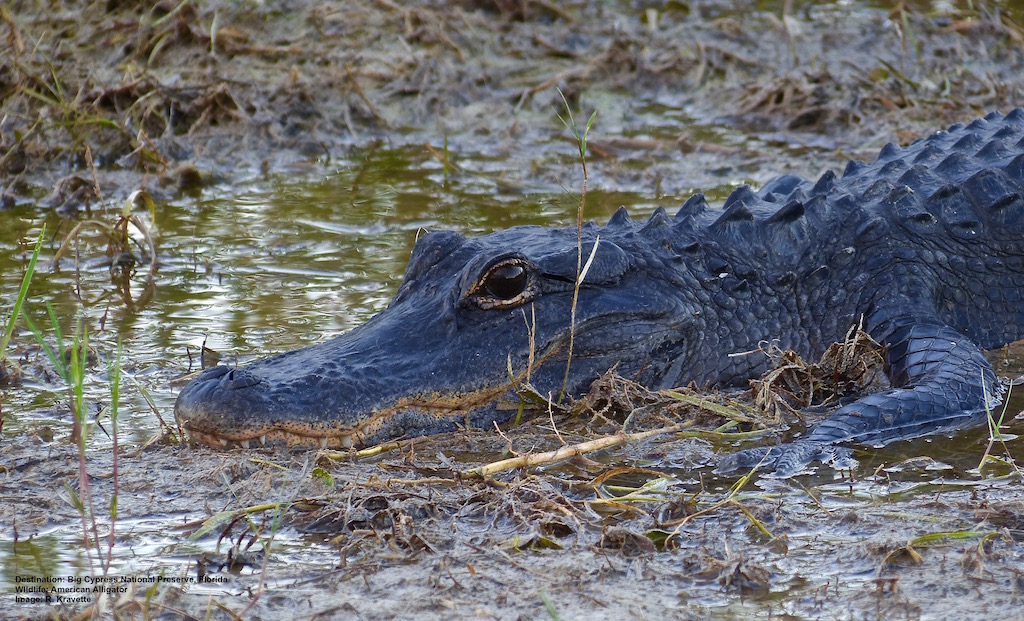How to Safely See Manatees in the Wild
A Guide to Responsible Manatee Viewing
FLORIDA MANATEE IN THE CRYSTAL RIVER WILDLIFE REFUGE COMPLEX. IMAGE THANKS TO FRIENDS OF THE CRYSTAL RIVER WILDLIFE REFUGE COMPLEX.
What is a Manatee?
ELEPHANTS ARE THE MANATEE'S CLOSEST RELATIVE. IMAGE: MARC CRONJE
The manatee, or sea cow is a curious, non-aggressive, vegetation eating marine mammal - and may have been responsible for the myth of the mermaid. Their rounded forms and curious, gentle natures may have been the reason why some lonely, long-at-sea sailors thought they saw sirens beckoning to them from the water!
Although manatees live their entire life in the water, never venturing on land, their closest relative is the elephant! And like their cousins, they are big! Manatees range in size from 8 - 13 feet (2.4 - 4 m) and 440 - 1,300 pounds (200 n- 590 Kg). But also like elephants, the populations of all manatee species (Trichechus inunguis the Amazonian or South American manatee, Trichechus manatus, the West Indian or American or Caribbean manatee (with two subspecies the Florida and the Antilles manatee), and Trichechus senegalensis, the African or West African manatee) have declined to dangerous levels. And populations continue to decline. The IUCN's Red List of Threatened Species lists all species as Vulnerable to extinction or Threatened.
THESE ARE ANTILLES MANATEES A SUB-SPECIEs OF THE WEST INDIAN MANATEE, IMAGE: ©WRANGLE I DREAMSTIME.COM
In Florida, where they have been protected since 1967, their numbers increased a bit. Unfortunately, in March of 2017, the U.S. Fish and Wildlife Service downgraded their protected status from Endangered to Threatened.
Why is the Manatee Population Declining?
Manatee Life Cycle: If their habitat is healthy and safe, they can live up to 40 years; but manatees reproduce very slowly. They can be as old as five years before sexual maturity. Pregnancy lasts 12 months, and the calf will stay with its mother for up to two years. Females give birth only every two to five years.
The major cause of manatee population decline is habitat degradation in the form of polluted water and habitat loss as the coastline is filled in for waterfront development. Compounding their perilous situation are well-meaning humans. Many manatees are seriously injured, and 25% percent of annual known manatee deaths are caused by collisions with boat propellers,
Manatees seem to like humans. They move languidly through the water often popping their heads up to get a better look when we humans are around. So does that mean they want to play? No. Touching and too close proximity can cause stress and accidental injury or sickness.
MANATEES ARE CURIOUS MARINE MAMMALS AND WHEN LEFT ALONE WILL COME TO CHECH YOU OUT! IMAGE: THANKS TO TOUR THE GLADES, TOD DALHKE
What is the Best Way to See a Manatee?
The best way to view all wildlife is as non-intrusively as possible. That means viewing marine life from the shore or a deck is best. But if you'd like to get up close on the water, there are ways to do it safely for both you and the manatee. Here are some of the rules, laws, and best practices for safely viewing manatees.
FLORIDA MANATEE CHECKING OUT A VISITOR. IMAGE THANKS TO: TOUR THE GLADES, EVERGLADES CITY. FLORIDA
The Dos and Don't of Manatee Watching from the Florida Fish and Wildlife Service
DO NOT touch manatees.
DO NOT feed manatees. or give them water.
DO NOT pursue or chase a manatee for a better look.
DO NOT poke, prod, or stab a manatee with your hands, feet or any objects.
DO NOT grab, hold, ride, or step on a manatee.
DO NOT separate or isolate a manatee from the rest of its pod nor a calf from its mother.
DO give the manatee space, let it come to you if it wants .
DO swim quietly - no kicking feet or splashing.
DO use snorkel gear and float near the surface of the water. This allows the manatee to come to you.
DO keep feet off the sandy bottom to prevent excess debris in water and reduced visibility
How Can I Safely & Responsibly Swim with Manatees?
In the past, knowledge of the effect of human/wildlife interaction was limited; today it is not. Unfortunately, some well-established tour operators in Florida and other areas still offer swimming /snorkeling with the manatees - but fail to protect either. These irresponsible operators are encouraging behavior that is dangerous to the animals and the humans as well as being illegal. Do your research before you buy your ticket.
Best On-Water Option for Manatee Viewing: Kayak or Canoe
Almost Always Good: Canoe or Kayak
A canoe or kayak is a great way to watch manatees. These boats are quiet, and there is nothing on them to accidentally hurt a manatee. Just be sure to follow the rules
Can Be Good: Motor Boat
This is an OK way as long as the boat moves slowly and cautiously. Stop completely when you see manatee "footprints." The manatees may swim near the surface to get a look at you.
Poor: Airboat
Airboat rides are fast and loud, so loud that some operators offer ear plugs - and that is precisely why they are harmful to the environment and wildlife. Airboats can startle, disrupt, and even kill wildlife, and airboats can degrade the ecosystem by creating unnatural pathways in the swamp grass. There may be a place for airboat rides, but wildlife viewing is not usually one of them.
How Can I Responsibly and Safely Photograph A Manatee?
More Manatee Safety from the US Fish and Wildlife Service
Look, but don't touch manatees. Also, don't feed manatees or give them water. If manatees become accustomed to being around people, they can alter their behavior in the wild, and perhaps cause them to lose their natural fear of boats and humans, which may make them more susceptible to harm.
Avoid excessive noise and splashing if a manatee appears nearby. The manatee may be resting and may surface without being aware of your presence. Noise and activity may startle the animal awake, which may put it in harm’s way if it is frightened and leaves the area.
If the site you visit allows in-water activities near manatees, use snorkel gear and float at the surface of the water to passively observe manatees. The sound of bubbles from SCUBA gear or other devices may cause manatees to leave the area.
MANATEES GATHER AT A SPRING, DURING COLD MONTHS WARM SPRINGS ARE IMPERATIVE TO THEIR WELLBEING. MANATEES CAN REST ALMOST MOTIONLESS FOR UP TO 15 MINUTES BEFORE THEY RISE TO THE SURFACE FOR A BREATH. IMAGE: THANKS TO CRYSTAL RIVER NATIONAL WILDLIFE REFUGE COMPLEX.
NO ENTRY-MANATEE REFUGES
No Entry-Manatee Refuge areas have been identified by the Florida Fish and Wildlife Conservation Commission and the U.S. Fish and Wildlife Service as crucial for manatee survival.
For more best practices from the Florida Fish and Wildlife Service and an overview of the laws for protecting manatee and other wildlife, please click here
Thanks to:
The Florida Fish and Wildlife Service and Three Sisters Springs, a unit of the Crystal Springs National Wildlife Refuge for these educational videos and information on responsible manatee viewing and to The Friends of the Crystal River Wildlife Refuge for information and images. Follow them on Facebook
More Manatees
More
Marine Mammal Viewing
Field Guide to Whale Sharks
Includes: How to View & Swim with Whale Shark
My Awesome Adventure with Grey Whales in Baja, Mexico
Our Reader's Special Report
This is Fun! Eco-tourism is a Family Affair at Ceviche Tours
Isla Mujera, Mexico







